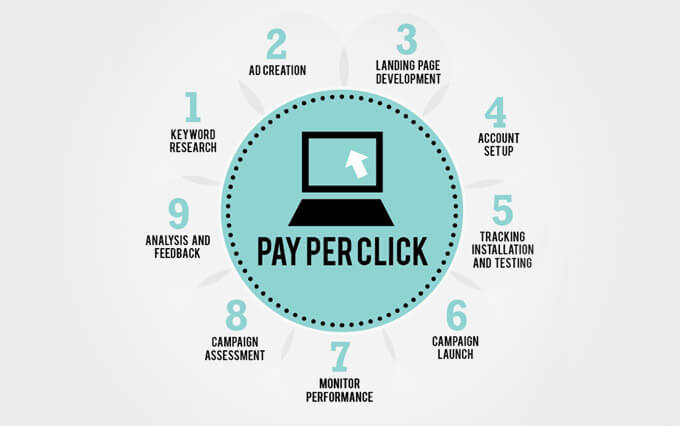Agile project management is a dynamic and iterative approach designed to deliver projects more efficiently. Unlike traditional methods, Agile promotes increased productivity, transparency, business process improvement, and higher-quality deliverables. Its principles encourage continuous improvement and active collaboration among teams. Involve with Agile Certification Course for Becoming Agile project manager.
Agile methodologies are not just confined to software development but are increasingly being applied to non-IT projects as well.
According to the Project Management Institute (PMI), project management is “the practice of using knowledge, skills, tools, and techniques to complete a series of tasks to deliver value and achieve a desired outcome.” A project manager’s role is crucial in utilizing these tools and techniques to ensure the project’s goals are met efficiently and effectively.
As emphasized in an Agile Certification Training, here we will discuss brief details about Agile, so let’s dive in!
Project Management Methodologies
Several methodologies can be used to manage projects, each with its unique approach and advantages. Common methodologies include:
- Waterfall: A linear and sequential approach.
- Agile: An iterative and flexible method.
- Extreme Programming (XP): Focuses on technical excellence and customer satisfaction.
- PRINCE2: A process-driven project management method.
- Six Sigma: Focuses on quality and defect reduction.
- Critical Path Method (CPM): Emphasizes task scheduling.
- Critical Chain Project Management (CCPM): Focuses on resource management.
Among these, Agile stands out for its continuous value delivery and adaptability, making it one of the most popular methodologies in use today.
Core Principles of Agile (Agile Manifesto)
The Agile Manifesto outlines 12 core principles that guide Agile project management:
- Customer Satisfaction: Delivering valuable software early and continuously.
- Welcoming Changes: Embracing change even late in development.
- Frequent Delivery: Delivering working software frequently.
- Collaboration: Daily collaboration between business people and developers.
- Motivated Individuals: Building projects around motivated individuals.
- Face-to-face communication: The most effective method of conveying information.
- Working Software: The primary measure of progress.
- Sustainable Development: Promoting a constant pace indefinitely.
- Technical Excellence: Continuous attention to technical excellence.
- Simplicity: It includes maximizing the amount of work not done.
- Self-Organizing Teams: The best architectures emerge from self-organizing teams.
- Regular Reflection: Regular intervals for team reflection and adjustment.
These principles form the foundation of Agile methodologies and ensure that projects are delivered efficiently while maintaining high quality and customer satisfaction.
Comparison of Agile with Traditional Methods
Agile project management significantly differs from traditional methods like Waterfall. Key differences include:
- Customer Collaboration: Agile prioritizes direct collaboration with customers over contract negotiation.
- Prototyping: Focuses on creating effective solutions over extensive documentation.
- Adaptability: Agile teams adapt to changes rather than strictly following a predetermined plan.
- People Over Processes: Emphasizes individuals and interactions over tools and processes.
These differences highlight Agile’s flexibility and responsiveness, making it a preferred choice for projects with dynamic requirements.
When to Use Agile
Agile is most effective for projects where time-to-market is critical, and requirements are likely to evolve. It is ideal for complex projects that benefit from continuous feedback and adaptation. For instance, Agile is highly suitable for software development projects where customer needs and technological advancements frequently change.
Implementing Agile Project Management
Implementing Agile involves several key steps:
- Choosing an Agile Method: Decide on a framework like Scrum or Kanban.
- Setting an End Goal: Start with a clear end goal in mind.
- Planning Meetings: Schedule meetings to align all project teams.
- Creating a Release Plan: Establish a plan with regular intervals for feedback.
- Sprint Planning: Plan sprints by determining which features or products will be delivered.
- Frequent Meetings: Regular meetings with the project manager to ensure teams stay on track.
These steps ensure a structured yet flexible approach to project management, taught in an agile certification course, it allows for continuous improvement and adaptation.
Pros and Cons of Agile
Here are some pros and cons of learning agile:
Pros:
- Customer Focus: Prioritizes customer needs and stakeholder engagement.
- Resource Minimization: Efficient use of resources, reducing waste.
- Increased Productivity: Streamlined processes enhance productivity.
- Collaboration: Promotes strong teamwork and communication.
- Quick Solution Deployment: Faster deployment of solutions.
- Shorter Turnaround Times: Reduced project completion times.
Cons:
- Limited Documentation: Agile projects may lack comprehensive documentation.
- Resource Planning Issues: Challenges in resource allocation and planning.
- Fragmented Output: Potential for fragmented deliverables.
- Lack of Metrics: Difficulty in measuring certain project metrics.
- Team Dynamics Challenges: Maintaining good dynamics in cross-functional teams can be tough.
Now that you have understood the pros and cons, let’s discuss two of the most famous and used agile frameworks.
Agile Frameworks
Scrum and Kanban are the two most used and known agile frameworks:
Scrum:
It is a popular Agile framework characterized by specific practices, values, roles (product owner, Scrum Master, developers), artefacts, and events. It focuses on delivering products in incremental, functional releases, allowing teams to adapt to changing requirements effectively.
Kanban:
Kanban is another Agile framework often used in DevOps and software development. It utilizes a Kanban board for visualizing work, ensuring transparency, and facilitating real-time communication. It is particularly useful for managing workflows with continuous delivery and frequent changes. Next, let’s discuss some best practices and techniques for agile project management.
Best Practices and Techniques in Agile Project Management
To ensure successful Agile project management, consider these best practices:
- Monitoring Progress: Use charts and tools to track progress.
- Self-Organizing Teams: Encourage teams to organize their work.
- Planning Meetings: Hold regular meetings to plan and review sprints.
- Sprint Reviews: Present completed work for feedback.
- Release Plans: Develop plans with set intervals for releases.
- Realistic Timelines: Set achievable timelines and pacing.
- Velocity Estimation: Estimate the team’s capacity to deliver work.
- Risk Reduction: Create spike solutions to mitigate risks.
- Regular Communication: Facilitate frequent in-person communication.
- Cross-training: Train team members across different skills for adaptability.
Careers and Job Outlook After Agile Certification Course
The demand for project managers, especially those skilled in Agile methodologies, is high. The job outlook is promising, with significant growth expected. Project management positions are typically well-paying, with an average salary of $95,370 per year.
Educational requirements often include a bachelor’s degree in fields like information technology, computer science, or business administration. Certifications, such as PMP and CompTIA Project+, enhance employability and expertise.
Skills and Responsibilities of Agile Project Managers
Agile project managers play a crucial role in ensuring project success. Key responsibilities include:
- Guiding Teams: Coaching teams in Agile methodologies.
- Defining Scope: Clearly defining project scope and objectives.
- Tracking Progress: Monitoring project milestones and timelines.
- Managing Risks: Identifying and mitigating potential risks.
- Stakeholder Relationships: Maintaining strong communication with stakeholders.
- Using Agile Tools: Utilizing tools like Scrum boards and Kanban boards.
- Promoting Compliance: Ensuring adherence to Agile principles and practices.
- Updating Stakeholders: Providing regular updates on project progress.
- Addressing Performance Issues: Tackling any hindrances to team performance.
- Leading Meetings: Facilitating team meetings and sprint reviews.
- Analyzing Metrics: Producing and analyzing project metrics.
Essential skills for Agile project managers include risk management, collaboration, organization, problem-solving, creativity, leadership, conflict resolution, time management, and adaptability.
Conclusion
In conclusion, an Agile certification course, like CompTIA Project+, and CSM Online Certification, offers valuable skills and knowledge for aspiring project managers. These courses cover essential Agile methodologies and frameworks, equipping professionals with the tools to manage projects effectively.
With the increasing demand for Agile project managers, obtaining certification can open doors to numerous career opportunities and ensure success in the ever-evolving field of project management. Whether you’re managing software development or non-IT projects, Agile’s flexible and iterative approach can help you deliver high-quality results while adapting to changing requirements and improving overall productivity.



